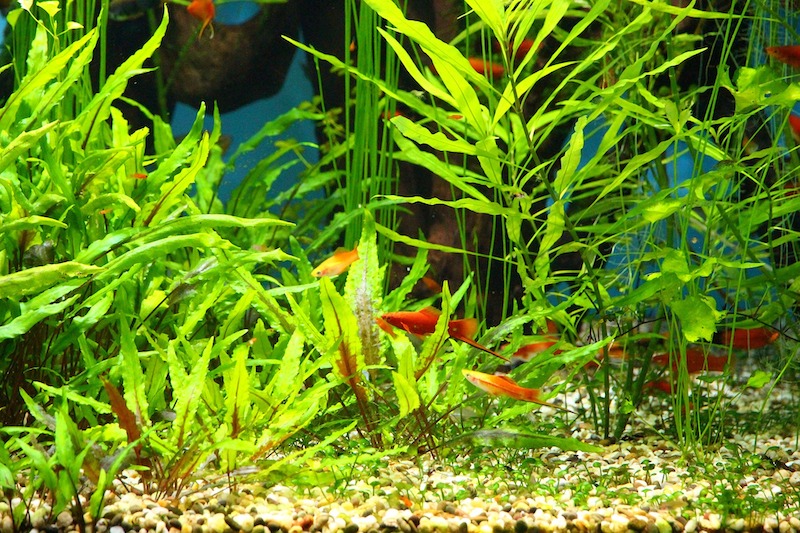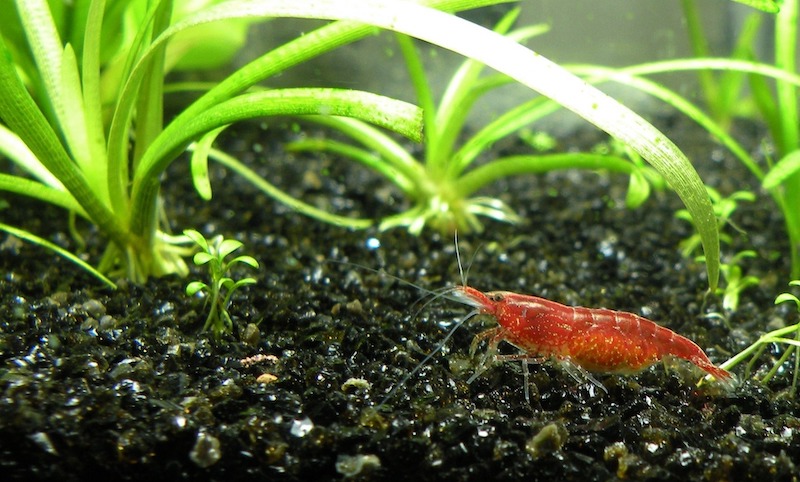Growing Aquarium Plants
Fish owners and plant enthusiasts can find common ground in turning to aquarium plants in order to create fascinating aquascapes. Making an aquascape is akin to planning and implementing a landscape bed. It can even be more intense, as the aquarium is turned into a small, complex ecosystem. A range of aquarium plants offer a variety of growth habits and forms.
Choosing the right aquarium plant for a situation is critical to ensuring success. Factors to take into consideration include difficulty level, and light, CO2 and aquarium size requirements. It is also important to take note of other plants growing in the aquarium, as well as fish or other animals that will be sharing the space.

Aquarium Plants Sunlight Requirements
Most aquarium plants benefit from some amount of sunlight or supplemental lighting each day. Requirements vary by species, but about 8 hours of light daily is a good starting point. Opt for sunlight or full-spectrum supplemental lighting to make sure light is available in the proper wavelengths. Another way to think about light requirements for aquarium plants is to provide 2 watts of lighting per gallon of water.
Insufficient light tends to appear as stretched growth, with longer distances between nodes. Too much light can encourage algae growth, cause leaf yellowing or browning, and lead to shriveled or rotting plants.
Planting Aquarium Plants
The best planting technique for an aquarium plant will depend on the type of plant. Most plants with roots should have their roots buried in the substrate. For plants with a rhizome, this thick, fleshy stem can be partially buried or wedged in a crack between rocks. Mosses are typically attached to a growing surface using thread or another connector. Some stem plants can grow freely or are best attached to the site where rooting is desired.
The best substrate will also depend on the fish and types of plant in the aquarium. Factors to consider when looking for a substrate include how well the substrate will promote anchoring and root development, if it will supply nutrients, and whether it will affect the water pH and other water parameters. Coarse sand or fine gravels are a good starting point.

Watering Aquarium Plants
Maintaining good water quality is critical to ensuring aquarium plants live and thrive. Most plants prefer a pH near neutral, or between 6.8 and 7.8. Take the water source into consideration; if the tap water supply is very hard, consider filtering the water, using reverse osmosis, or using distilled water as a base. If using reverse osmosis or distilled, the water will need to be remineralized to keep pH fluctuations in check. The ideal water temperature range varies depending on plant species, but a good starting point is to keep the water between 72 and 82 degrees Fahrenheit.
Fertilizing Aquarium Plants
Aquarium plants generally require iron, potassium, and magnesium, as well as other nutrients to thrive and maintain peak color. Some plants feed more through their leaves, while others take up the majority of nutrients via their roots, so it may be necessary to research individual plants and work fertilizer into the care routine accordingly.
For tanks with fish, the fish excrement will likely provide enough nutrients for the plants to thrive without any supplemental fertilizer needed. If fish are not present, aquarium plant nutrients can be incorporated by using a nutrient-rich substrate, placing fertilizer tablets into the substrate, or using an aquarium liquid fertilizer according to label instructions. In general, incorporate nutrients into an aquascape slowly, in small increments, to avoid upsetting the ecosystem balance.
Common Aquarium Plant Problems
Dark leaves on plants are often attributed to excessive iron, while leaf yellowing is typically an indicator of an iron deficiency. Holes in leaves are caused by fish or other organisms feasting on the foliage or by high levels of nitrates in the water. If some plants are struggling while others are thriving, this may mean that the carbon dioxide level in the tank is too low for the struggling plants. You can address this by using a carbon dioxide diffuser, which is highly recommended for planted tanks. Other growing problems can be caused by improper light level, water temperature, or pH level.

Propagating Aquarium Plants
It is possible to easily propagate many types of aquarium plants, although the best method will depend upon the type of plant. Many stem plants will produce roots along the stem if cut into segments. Rooted or rhizomatous plants are potentially divided by gently teasing apart the root mass into multiple sections. Moss plants are propagated simply by snipping off a small section of the existing mass. Each fragment removed can begin to grow wherever it settles. For this reason, it is best to remove moss from the water to trim it or turn off any water circulation system and siphon off any wayward fragments to avoid the moss overtaking an aquascape.
Growing Aquarium Plants Outdoors
During suitably warm weather, it may be possible to bring aquarium plants outdoors in a pond or other water feature. Keeping the plants in shade will likely be necessary to avoid overheating. Too much sun and heat can lead to excessive algae growth. Monitor night temperatures to make sure the water temperature will not drop too far below the ideal range for the specific aquatic plants. Depending upon the location, vigorous water circulation and mesh over the top of the water may be required to keep mosquitoes from multiplying in the water.
 |
Author Angela Ryczkowski - Published 2-25-2023 |
